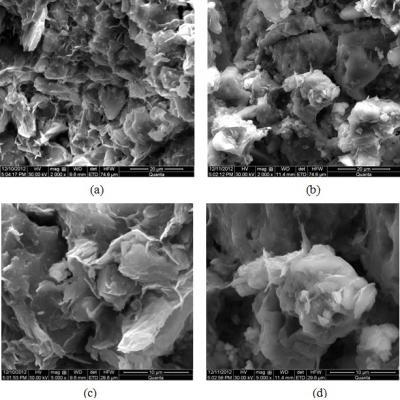According to the results of a recent study, soil color changes in the atmosphere basically through the oxidation of chemical substances in the soil. The fundamental mechanism is the remodeling effect of micro-structures because of motion effects and chemical reactions of the water–soil–electrolyte–atmosphere system leading to the coupling and transforming of soil particles. The above provides a theoretical foundation for the assessment and forecast of the stability of the geotechnical environment.
Nowadays, with increasing focus on the harmful effects of fog and haze on human health, engineers have been presented with a series of new scientific issues such as the interactions that occur between the atmosphere and soil, the effects of the interaction on the soil, and related engineering disasters.
The mechanism for the change in characteristics of clay under ambient temperature and pressure and a normal atmosphere was investigated in the paper Research on Variability Characteristics of Micropore of Zhanjiang Clay under Ambient Temperature and Pressure, Normal Atmospheric, written by Dr. ZHANG Xian-wei and Prof. KONG Ling-wei and published by Sci China Tech Sci (Chin Ver), 2014, 44: 189.
With reference to the phenomenon that soil color changes from grayish green and light grayish green to yellow and yellowish brown when Zhanjiang clay is exposed to the atmosphere, this research reveals that the basic reason for the alteration of soil color is the oxidation reaction between the atmospheric and the oxide of iron, which reduces the plasticity, sensitivity and structural yield stress of soil. The transformation of soil properties by the atmospheric is not due to inherent changes of minerals, but the remodeling of micro-structures because of motion effects and chemical reactions of the water–soil–electrolyte–atmosphere system, leading to the coupling and transforming of soil particles. It is thus the variation of the ultra-micro-structure that is responsible for the phenomenon of the change in soil color.
Considering the prolonged effect of oxidation and its potentially adverse effect on soil stability through a reduction of structural strength, this research shows that it is necessary for geotechnical engineering to strengthen the monitoring of the effects of physical and chemical factors in the environment. The results obtained provide theoretical support for the assessment and forecast of the stability of the geotechnical environment.

This shows (a) natural clay (2000 magnification);(b) oxidized clay (2000 magnification);
(c) natural clay (5000 magnification); (d) oxidized clay (5000 magnification).
(Photo Credit: ©Science China Press)




Comments